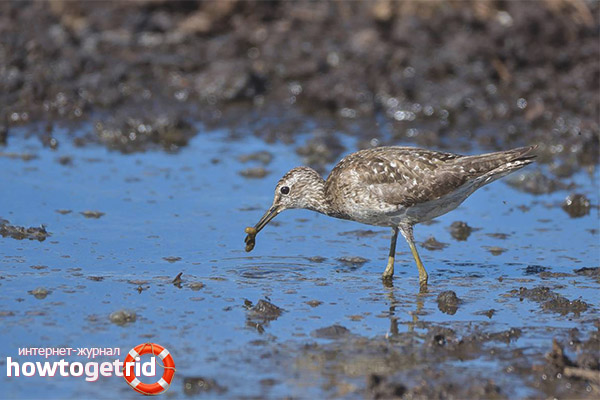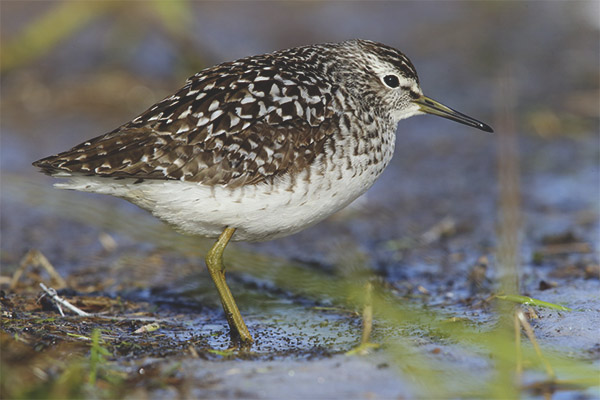The content of the article
Under fifi means migratory bird, which is common in flooded plains, marshlands and other areas with high humidity. For the winter period, these individuals go to warm climatic regions, be it South Asia or Africa. When the migration begins, members of the family gather in flocks or fly alone. But we will not rush ahead, disclosing cards, so that after the received information you have your own opinion about these feathered inhabitants.
Description
- Adults during the mating season acquire beautiful plumage. It looks brownish gray in the upper section of the case. Against this background, flames and strips flared close to the main color shade. The back is dark, as are the wings and shoulders. The lumbar region is bright, so the contrast is clearly visible. There are no sharp boundaries between the whitish lower back with upper tail and darkish back.
- The area behind the neck and the parietal parts are pigmented with dark oblong stripes. In the area of the base of the beak above the eyes there is a white mark, it is long, setting behind the eyes. The head from the sides is painted with alternating brown and light stripes.
- Steering wings are long. The abdominal part is light, as well as the neck with the chin. The rib cage is white; there are stripes of a contrasting subtone on it. Fly wings are light, but they can be patterned patterns in the form of strips. The tail can be rounded or pointed.
- Long paws are not too light, but not dark. They are rather yellowish or olive, faded. When a bird is in flight, its legs protrude beyond the edge of the tail. As for the shade of the eyes, they are brownish. The beak is dark, rather black. There is a membrane between the middle fingers.
- When birds mature and prepare for wintering, they replace their plumage. It becomes brown with greyish marks. The neck in the front and side portions is gray with a violet-red tint. The same colors are seen on the chest. All other areas are covered, as in summer.
- Birds that have grown to about a yearin the upper part slightly covered with red-purple feathers. There may be black markings, as well as numerous reddish inclusions. Birds are like blacks. The upper part of the head is black with stripes of ocher tone. The lower part of the body of young animals is colored by the type of mature individuals in winter.
- It should be noted that in the individuals under consideration a narrow strip of black color passes from beak to eye. Also, a black thin strip can be observed above the eyebrows of a light shade. On the white area of the chest can be observed raid dirty color. You can also notice that these birds have gray-olive legs.
- If you compare the fifi with Chernysh, you can see that in the first case the individual has a very variegated and lighter top. It is not much different in color from the uppertail and loin of white color. You may also notice that the bright eyebrow comes to the eye. It is long and comes from the beak.
Nutrition

Often, the basis of food of the considered individuals includes all kinds of insects that live in aquatic habitats. In addition, such birds often feed on fry, larvae, worms, clams and tadpoles. Also in the diet of fifi includes small amphibians.
Breeding
- In most cases, the birds in question arrive at nesting sites at the end of winter, if it is warm, or at the beginning of spring. As soon as individuals migrate, pairs begin to form in these places. After mating and mating, the birds begin to make their nest.
- They pick a suitable place in the bushes, tall grass and small trees. Next, the couple is engaged in the construction of the nest. In one laying, the female is able to bring up to 5 eggs. The vysidka process takes about 3 weeks. After that the youngsters get hurt by the light.
- Often, the female does not reach the end, in this case, the male takes its place. After the appearance of the young, he also continues to engage in their education. After another 1 month, the chicks gradually begin to stand on the wing. They become independent. Birds reach sexual maturity at the age of 2-3 years.
Interesting fact
The surprising fact is that the female does not always wait for the chicks to appear in the world, she simply leaves the clutch. In this case, the male comes to the rescue and continues to hatch eggs. Only thanks to this the young live.
Today we looked at fifi, a little bird with special appearance and a clear voice. Individuals of this breed group live in humid climatic conditions.They are seduced by swampy areas, flooded plains and other places of this kind.
Video: Fifi (Tringa glareola)











To send